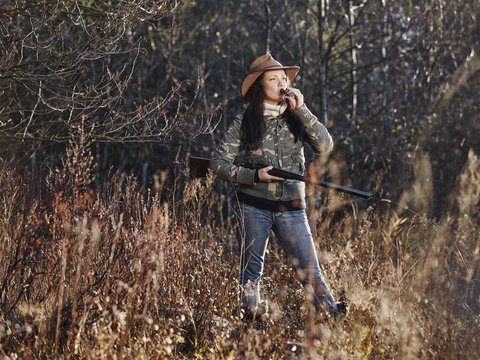Ok, we’ve all been there. One of our buddies invites us to the “best club ever” and we believe him! Not only that, he has about a hundred famous hunting stories about all the green heads he got last Wednesday.
“Man, the other guys couldn’t hit anything,” he brags.
So, gun in hand, you wade out to the blind and for some reason, those darn birds decided to fly over to the next blind. In reality, when you have a good day, there’s no reason not to get birds to come in, unless you don’t have a clue how to call. So instead of relying on Mr. Cool to get you some action, here’s a few tips on how to give yourself the best odds.
First of all, it’s really hard not to get super excited when we see them working in. The biggest mistake many duck hunters make is using all that excitement to blow the heck out of their call. Big no-no! You can have the perfect decoy spread, a great blind and awesome concealment but when you call too much, you’ll be sure to watch them wink at you as they fly by.
Sometimes it’s tough to get a good read on the birds, especially in foggy conditions. A key element in calling is observing the behaviors of ducks. If you blow a good greeting call and they start working in, relax and let them come on in. Watch how they act, if they are on your decoys, they will look intent on coming in . . . let them. If they look confused (turning their heads etc.) then you may want to give them some direction to get them on track. I’ve hunted with guys who just can’t stop blowing their darn call and it almost always ends up flaring them. Be patient.
Another cool trick I learned was to wait until the birds are down wind. That way, they don’t get confused on where the call is coming from.
Ducks are super smart, and super spooky. Usually if they make more than three circles, they see (or hear) something they don’t like. Blue bird days are well known for this so you have to get their attention and keep it. Remember to lower the volume of your calling as they get closer.
Another thing to consider is how you finish your calling. Sometimes everyone is doing a feeding call and that’s not how things sound in a well stocked duck pond. You need to mix your feeding calls in with some quacks and some greeting calls. It also helps to increase the excitement in your calling while paying attention to the volume. Be excited but don’t blow them out with excessive loud calls.
It’s easy to get stuck with one particular style of calling. You have to remember that different conditions change the way ducks communicate. For instance, if it’s really windy and the weather is bad, you’ll have to call a bit louder. On still, quiet days, try bringing the tone down and just doing some quacks and feeding calls. The key is to experiment. If you’re keen to their behavior, you will notice when they react to your call. If they’re not reacting, try something else.
I had a duck call that worked wonders for years. Then one day, it just stopped working. I couldn’t figure it out and thought it was me. The bottom line was that something didn’t work anymore and I couldn’t hear it—the ducks could! Have a few calls with you and see which one works best on that specific day.
Duck calling is definitely an art. The more you practice the better you’ll get. Get out there with someone who is really good and watch them. That’s the biggest tip I have. I also like to watch ducks in their natural habitat and try to mimic their behavior. This works well too. Practice makes perfect!
Photo credit: Dreamstime








